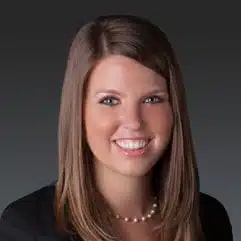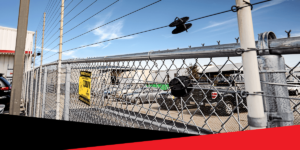When someone becomes part of your team, you want to believe that you can trust them, that they’re on your side, and that they’d never do something to negatively impact your business, like stealing. Unfortunately, that’s just not what the statistics show. Internal theft is a continuing problem for U.S. businesses, draining around $50 billion annually.
What Is Internal Theft?
Internal theft occurs when employees steal products, money, or sensitive data from their employer. Asset misappropriation, which includes the theft of cash, inventory, and services, is the most common form of internal theft. It occurs in 89% of cases according to the Association of Certified Fraud Examiners 2024 report.
Other forms of internal theft include embezzlement, fraud, manipulating timecards, intellectual property theft, falsifying reports, and stealing equipment. Internal theft examples include:
- Cashiers skimming money from registers
- Warehouse employees smuggling out products
- Construction workers stealing tools or using heavy machinery for personal jobs
- Accountants altering financial records for personal gain
- Employees using their knowledge of your business’s weak points, schedules, and where the most valuable materials are kept to organize an after-hours heist
The impact of internal theft on businesses is severe, leading to financial losses, decreased employee morale, and damage to the company’s reputation.
Internal vs. External Theft
While both internal and external theft pose significant risks, there are key differences:
- Perpetrators: External theft is committed by people outside your organization, like shoplifters or thieves. Internal theft is carried out by employees, their friends and accomplices, contractors, suppliers, and service people. Anyone with insider access and business knowledge can perpetrate internal theft.
- Methods: Thieves often use force or deception to break in and steal, leaving clear signs of a crime. Employees and other internal individuals exploit their insider knowledge and access to steal discreetly and cover their tracks. The National Retail Security Survey 2023 cites merchandise theft, refund fraud, cash or deposit theft, and unauthorized discounts for associates as the top methods of internal theft.
- Detection: External theft is typically more visible, with evidence like broken locks or missing inventory. Internal theft can be harder to detect, as employees may know how to manipulate records or conceal their activities.
- Prevention: Businesses often focus on preventing external theft with perimeter security measures like fences and lighting. Preventing internal theft requires additional strategies like building access controls, separation of duties, and employee monitoring.

How To Know If You Have Internal Theft
When a thief breaks into your business, you’ll know. Smashed windows, cut fences, and general disarray make it obvious that someone has broken into your business. Internal theft, however, is much harder to detect.
When determining if internal theft is a problem in your business, look for these signs:
- Your cost of goods is increasing, but your sales are staying the same
- You notice things missing
- Your inventory numbers don’t add up
- Employees begin to report shoplifting incidents or missing items
- Cash goes missing regularly
- Deposits consistently come up short
- Sales drawers fail to balance regularly
- Friends of employees are often seen hanging around your location
- Unusually high shrinkage in certain departments or shifts
- Suspicious patterns in transactions, refunds, or discounts
- Employees who are territorial about their work areas or are resistant to changes in procedures
Protect Your Business from The Inside Out (And the Outside In)
Just as there are ways to keep external thieves out of your profits and off of your property with comprehensive perimeter security measures, there are plenty of ways to prevent internal theft by your employees, contractors, and visitors to your business. Creating a strong culture of security by implementing multi-layered solutions and exhaustive policies shows your employees that you take security seriously, deterring them from acting nefariously.
Here’s how you can protect your business from internal theft:
- Conduct rigorous screenings: Complete thorough background checks on all potential hires, including criminal history, credit reports, and references. Past criminal behavior can predict future criminal behavior. While not foolproof, this can help weed out high-risk candidates.
- Have clear policies: Establish clear, written policies about employee theft, including definitions, consequences, and reporting procedures. All employees should sign acknowledgments of these policies to prevent legal liability for your business.
- Provide regular training: Training your employees on loss prevention and ethics helps honest employees prevent theft by showing them how to report suspicious activity. You should also educate employees on security protocols to deter dishonest employees from stealing.
- Perform regular audits: Inventory counts and accounting audits will reveal theft, help you see if there are any vulnerabilities in your procedures, and put a damper on employees’ temptation to steal.
- Separate job duties: Checks and balances can help prevent internal theft. Separate job functions that could make it easier for an employee to steal, such as creating purchase orders, inventory, and bookkeeping. By doing all those jobs, an employee could create a fake purchase order, sign off that the order was received, and pocket the money. Having different employees involved in each step helps prevent nefarious actions.
- Use an inventory management system: An inventory management system logs the incoming and outgoing movement of inventory, so theft of inventory cannot happen without notice.
- Install a video surveillance system: Video surveillance helps you catch thieves in the act so you can recover your lost items and serve up repercussions to the offending party. Install visible cameras in high-risk areas like cash rooms, stockrooms, and loading docks. Having video cameras prominently displayed at your location can also act as a psychological deterrent to theft.
- Utilize remote video monitoring: For added protection, invest in remote video monitoring to ensure your site is monitored 24/7. Footage can serve as evidence for law enforcement to prosecute internal theft cases if they occur.
- Secure your perimeter: Internal theft doesn’t only happen during work hours. An employee, service person, or contractor with insider knowledge of your business may find your business’s vulnerabilities and return after hours to exploit them. Keep your premises secure with an electric perimeter fence that provides a safe but memorable shock if anyone attempts to tamper with it.
- Protect your on-site structures: Once your perimeter is secure, it’s time to safeguard your warehouses, offices, and other buildings with integrated intrusion detection. Keep highly sensitive or restricted areas protected against unauthorized entry. Weak points like windows and doors are also protected with wireless motion detection and door contacts.
Protect Your Business With AMAROK
Does your company have vulnerabilities that an employee could exploit? Find out with a complimentary threat assessment from the security experts here at AMAROK. We’ll help you find weak spots in your security before thieves do.
With over 8,000 happy customers, AMAROK is your trusted partner in perimeter security. Contact us today and let us help you protect your business from the inside out.





